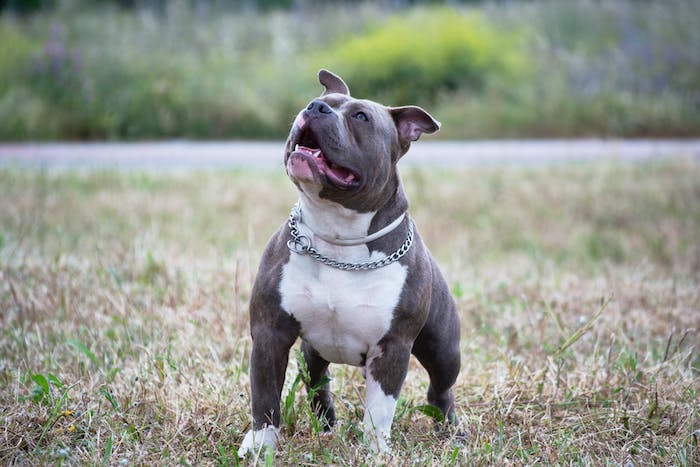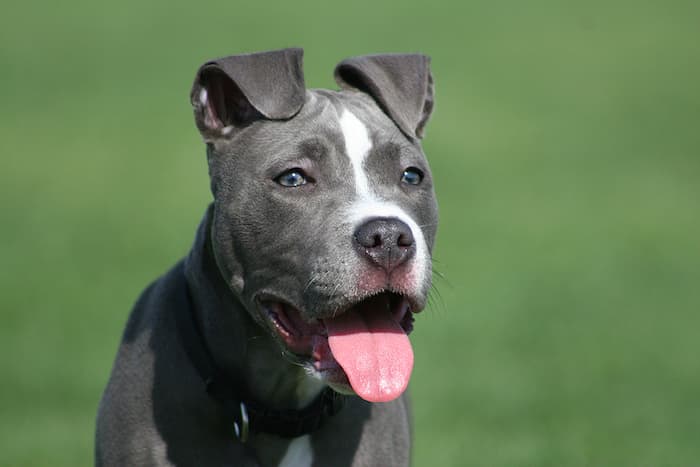Pit Bulls are often regarded as one of the toughest dog breeds to train. It’s not because they’re inherently bad dogs, but rather due to a combination of factors that require specific handling and training techniques.
Pit Bulls can sometimes be hard to train due to their strong-willed nature, high energy levels, and potential for stubbornness. Consistency, patience, and positive reinforcement are all key to overcoming these challenges and fostering good behavior.
Let’s delve more into Pit Bull training and provide insights into effective training strategies for these lovable challenging companions.

Why Is Pit Bull Training So Hard?
Pit Bull training can present unique challenges due to several factors. Let’s break them down in more detail:
1. Strong Will:
Pit Bulls are known for their determination and independence. While this trait can be admirable, it also means they may be less inclined to follow commands without proper motivation.
2. High Energy Levels:
These dogs are typically bursting with energy, requiring ample physical exercise and mental stimulation. Without sufficient outlets for their energy, they may become restless and more difficult to train.
3. Stubbornness:
Pit Bulls can exhibit stubborn behavior, especially if they sense inconsistency or weakness in their owners’ leadership. They may test boundaries and push back against training efforts.
4. Negative Stereotypes:
Unfortunately, Pit Bulls often face unfair stereotypes, leading to misconceptions about their temperament. Some owners may approach training with fear or skepticism, which can affect their ability to establish trust and rapport with their dogs.
5. Past Trauma or Neglect:
Many Pit Bulls come from backgrounds of abuse or neglect, which can impact their behavior and trust in humans. Building a strong bond and positive association with training may take extra time and patience.
Despite these challenges, Pit Bulls are capable of excelling in training with the right approach and commitment from their owners.
Professional training assistance and resources tailored to Pit Bulls can also be beneficial in overcoming these obstacles and fostering a strong bond between owner and pet.

When to Start Training Your Pit Bull?
Starting your Pit Bull’s training can happen at any time, whether you’re adopting a young pup or already have an older companion.
Pit Bulls are naturally bright and eager to please, which makes training easier, especially if you begin when they’re young. Early training and socialization prevent aggressive behavior as your Pit Bull grows, while also strengthening the bond with their family.
Meanwhile, training an older dog might be tougher, but with dedication and patience, it’s not impossible to make positive changes.
How to Train Your Pit Bull?
Training your Pit Bull requires a combination of patience, consistency, positive reinforcement, and understanding of the individual dog’s needs and history.
Let’s go over some steps to effectively train your Pit Bull:
1. Socialization:
Ensure your Pit Bull is properly socialized, especially when young, to prevent aggression towards other dogs or humans. Even if older than a year, socialization is still achievable through exposure to various environments, scents, sounds, animals, and people.
2. Basic Commands:
Begin with teaching basic commands like “sit,” “stay,” “come,” and “down.” Once your Pit Bull grasps these, progress to more advanced commands or tricks such as “fetch” or “leave it.”
3. Positive Reinforcement:
Utilize positive reinforcement, whether it’s treats, toys, or praise, to motivate desired behavior. Consistently reward good behavior during training activities to reinforce positive habits.
4. Avoid Punishment:
Never resort to hitting or yelling at your Pit Bull as punishment, as it can provoke defensive aggression. Establish dominance through love and trust, rather than fear, to foster a healthy relationship.
5. Exercise:
Regular exercise is crucial for Pit Bulls to release their energy. Incorporate exercise into training sessions through activities like fetch or short runs, improving obedience and leash manners.
6. Take Breaks:
Given their limited attention span, allow your Pit Bull breaks during training sessions to prevent overwhelm. Keep sessions short, around 15 minutes, and repeat multiple times a day for effective training without straining your dog.
Conclusion
Training a Pit Bull may present its challenges, but with the right approach, patience, and dedication, it’s entirely possible to have a well-behaved and loving companion.
Remember, every dog is an individual, and with the proper guidance and training, Pit Bulls can thrive in any environment.
